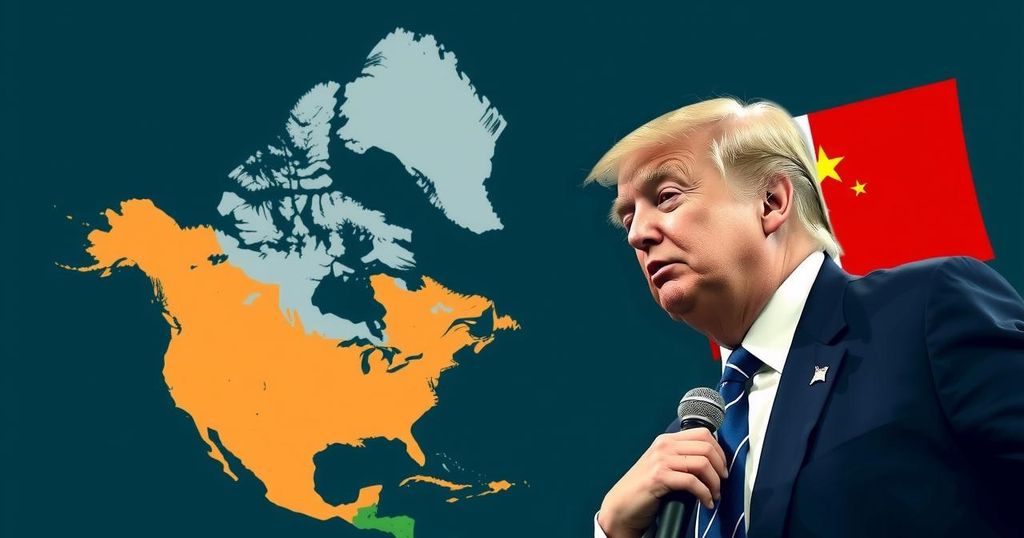President-elect Donald Trump plans to impose tariffs on imports from Canada, Mexico, and China, initiating a 25% tariff on the former two and a 10% tariff on the latter. These measures aim to tackle illegal immigration and drug trafficking, with significant implications for global markets and trade relations. The economic fallout, including inflationary pressures and potential responses from affected countries, could redefine trade costs and strategies moving forward.
President-elect Donald Trump has proposed imposing significant tariffs on the United States’ largest trading partners—Canada, Mexico, and China—soon after assuming office on January 20. These tariffs, which include a 25 percent levy on imports from Canada and Mexico and an additional 10 percent on Chinese goods, are framed as measures to address the issues of illegal immigration and the opioid crisis. Trump has asserted that the tariffs will remain in place until the flow of illicit drugs and undocumented migrants is curtailed. This announcement has raised serious concerns regarding the potential impact on trade relations, especially given the existing trade deficits with these nations.
The planned tariffs are anticipated to induce higher costs for manufacturers in these countries, which could lead to increased prices for consumers in the U.S. For instance, the auto industry in Mexico, which serves as a significant hub for several international automakers, could be severely affected. Moreover, companies like Foxconn and Nvidia that have operations in Mexico might face financial challenges due to increased export costs. As the U.S. economy is susceptible to inflationary pressures, the tariffs could complicate monetary policy for the Federal Reserve, thereby affecting interest rates.
International reactions to Trump’s announcement have varied; Canadian officials emphasized their commitment to beneficial trade relationships, while Mexican authorities hinted at reciprocal actions. China’s response cautioned against a trade war, stressing the benefits of economic cooperation. As global markets reacted negatively, the Canadian dollar and Mexican peso depreciated against the U.S. dollar. Furthermore, experts suggest that the tariffs may signal Trump’s intent to renegotiate existing trade agreements such as the USMCA, thus complicating the trade landscape further.
The proposed tariffs by President-elect Donald Trump signify a continuation of his assertive trade policy, particularly against countries with which the U.S. has substantial trade deficits. This bold move appears to be a strategic leverage tactic to compel Canada, Mexico, and China to address trade imbalances and the issues of border security and drug trafficking. Historically, Trump has utilized tariffs as a tool for negotiating favorable trade conditions, making this approach predictable given his past rhetoric and actions during his initial term. As these three nations constitute vital trade partners for the U.S., the ramifications of such tariffs are expected to ripple throughout the global economy.
In summary, President-elect Trump’s strategy to impose tariffs on Canada, Mexico, and China underscores a critical focus on addressing perceived trade imbalances and domestic issues related to immigration and drug trafficking. The potential economic repercussions for affected nations, alongside the challenges posed within U.S monetary policy, indicate a complex trade environment in the coming months. This situation necessitates careful monitoring as the implications extend beyond mere tariffs to affect broader economic relations and global trade dynamics.
Original Source: www.aljazeera.com






